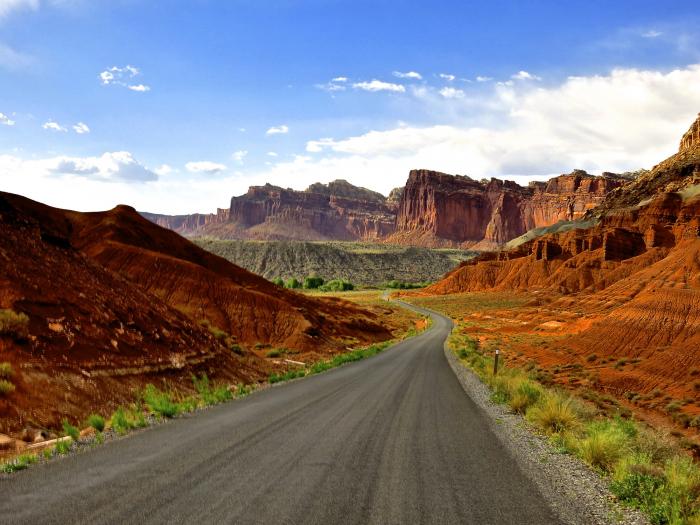
From the expansive vistas of the Grand Canyon to the rolling landscape of the Great Smoky Mountains, our national parks are treasures that belong to all of us, yet unbeknownst to most, air pollution remains one of the biggest threats they face.
In the last decade the National Parks Conservation Association (NPCA), the leading voice in protecting and preserving national parks, has made progress in cleaning up the air quality in our parks and communities despite threats against current policies that limit ozone, climate and haze pollution, compromising the air we breathe.
Thanks to SunPower, NPCA’s members and supporters can now take action to help us in the fight to protect park air by considering switching to solar energy, to help reduce carbon emissions and improve air quality. Now through July 11, 2019, each NPCA member or supporter that has a SunPower® home solar system installed will receive a $500 mail-in rebate, and SunPower will donate $500 to NPCA.*Offer Rebate/Donation Terms: Before offer rebate costs will vary, depending on system specifications. Must own your home to qualify. Only available for new, first-time customers. This offer may not be applied to quotes on existing proposals or past purchases. Please check with your SunPower installer to confirm participation in this offer. Rebate form must be completed and returned to SunPower within 90 days of the final invoice date. Allow 6-8 weeks for processing. Donation to NPCA will be processed with the rebate. Other terms and conditions apply. Void where prohibited.
Tackling challenges facing our national parks
Fighting climate change: Climate change remains one of the biggest challenges facing our national parks. Glacier, Joshua Tree and Saguaro risk losing their namesake features. Warming water threatens the existence of species like Shenandoah's native brook trout. Record-breaking wildfires are devastating forested parks such as Rocky Mountain and Yosemite. Everglades and other coastal parks are losing shoreline, which offers critical protection against storms. Outdated coal power plants are a main source of carbon dioxide pollution that drives these dangerous changes, and that’s why renewable energy sources such as solar are so important because they offer a way of reducing our carbon footprint.
NPCA is part of a broad coalition opposing the Environmental Protection Agency’s (EPA) efforts to gut the Clean Power Plan, a critical effort to significantly reduce greenhouse gas emissions from power plants. From testifying at EPA and state-sponsored hearings across the country, to generating 16,000 comments from park advocates, NPCA will continue to fight to ensure common sense policies are in place to keep the air we breathe clean, and to limit otherwise unchecked pollution that contributes to climate change.
Returning obstructed miles of views to national parks: According to a recent study by researchers at Iowa and Cornell universities, some of our most iconic landscapes are plagued by significant air pollution comparable with densely populated cities such as Los Angeles. In fact, America’s 33 most visited national parks are as polluted as our 20 largest cities. On average, visitors to protected national parks from Grand Canyon to Great Smoky Mountains, are missing out on more than 50 miles of irreplaceable views.

For decades NPCA has advocated for states and the EPA to work together to reduce pollution that shaves miles off national park views. NPCA has helped secure sharp reductions in coal plant pollution through enforceable federal emission reduction requirements, however the current administration is rolling back a number of these pollution reducing policies. We’re opposing plans now that would make it easier for coal-fired power plants to pollute by evading pollution controls in states such as Arkansas, Texas and Utah, impacting parks such as Buffalo National River, Big Bend and Zion.
Tackling ozone pollution: A successful lawsuit filed by NPCA and allies resulted in action that triggers the Clean Air Act process for states to develop plans to reduce ozone pollution. In April, EPA signed a final rule designating most areas of the country that are high in ozone pollution – and more than 100 national parks are located in these areas that exceed legal ozone pollution levels. While these designations are an important step in the right direction, we are fighting for stronger standards that are uniformly applied to protect parks such as Rocky Mountain and Cuyahoga Valley National Parks.
Challenging oil and gas development near national parks: In North Dakota emissions from a nearby refinery are projected to impair the park’s air quality and threaten public health. In Washington state, the expansion of a refinery will increase pollution and the number of poor visibility days at Olympic National Park from 54 to 70 and from 38 to 54 at North Cascades. NPCA continues to fight to protect parks near these two refineries. And collectively, we are working to stop or mitigate pollution from oil and gas development that will devastate the climate and irreversibly degrade surrounding national park resources, landscapes, the park visitor experience and public health.
National parks are all of our responsibility, a shared resource and legacy we must protect. What national park legacy do we want to leave the next generation? Learn more about how you can protect national park air at www.npca.org/cleanair and sign up to receive news and alerts from NPCA on this campaign and other critical issues affecting our national parks.
Stephanie Kodish leads NPCA's effort to protect national park resources, visitors and neighboring communities from air and climate pollution.
Visit SunPower’s NPCA rebate page to sign up for a free home solar evaluation.

